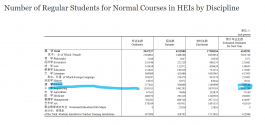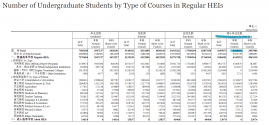i also discussed with some my friends.... China will need a huge amount of DUV lithography by 2025 ... China's semiconductor industry is much bigger than the semiconductor industry of the future of the U.S.... also talking about EUVL, exactly saying each bottleneck is being broken.. U.S has allowed China to reshape their semiconductor industry...
Yes, I think it's quite apparent from the recent news, they are going through a huge fab expansion in maturity node that is out there in public. This will require a lot of tools. Chinese tool suppliers will have a tough time scaling up quickly to fill all that demand, so any foreign company (other than American ones at this point) are welcome to participate. Given that we are in an industry downturn, Chinese market should be attractive to all the tools suppliers around the world.
And what people don't necessarily see is that SMIC is also planning a pretty large advanced node production bump. China is not resting on its butts. Being silent about the US sanctions doesn't mean Chinese gov't is doing nothing. It has given domestic firms the resources (capex) needed to expand as much as they could.
I guess 1-2 years later Shanghai Xinyang will finish EUV photoresist research
Luwei Optoelectronics will take care of the EUV mask, in addition, Changchun Institute of Optics and Mechanics has most of the EUV technologies from masks to light sources.
I really think we should stop focusing on Arfi scanners so much. Even if SMEE can't match 1980i in scanning speed or precision at this point, it should be good enough a year from now for 40/28/22 nm nodes and probably 14nm with lower yield. That to me seems like a low end in expectations. SMIC has enough ASML machines coming in to produce 70 to 100k wpm of FinFet wafers. That's enough for China until 2025/2026.
A big question for them is how quickly SMEE and suppliers can ramp up its production of not just Arfi scanners, but all older generation scanners. The production bump for Guowang is a great sign for 2023.
But the biggest question is EUV. All their efforts thus far is going to hit a full stop at 4nm/low yield production if they don't get EUV prototype by 2025 probably. I really like the recent news from Huawei about EUV.
@ansy1968 will love this, but I think Huawei will be leading the EUV integration effort and a lot of the other efforts for advancements here. The big focus now is how quickly they can building a working EUV. They achieved that with 90 nm Arf scanner in 2018 and 28 nm Arfi scanner in 2021. The goal seems to be 2025 for EUV. Let's hope they get there by 2025. And by 2027, they'd be mass producing EUVs locally.
I neither agree nor disagree? I think replacing non critical parts isn’t just a matter of playing switcheroo, but I also don’t think there’s much standing behind the argument that because it hasn’t happened yet that must mean it’s technically challenging to do so. Tbh I think you tend to over-emphasize technical challenge as a barrier when oftentimes the question is more about whether certain engineering choices make business sense.
Right, I think you make a good point about ability vs desire. ASML has the ability to replace US parts but have never found the reason to do so before. With a 1500 staff office in China, they should have the ability to replace US parts as long as Dutch gov't is okay with it. But in my mind, as long as Dutch gov't allows the current scanners that SMIC has on order to be delivered, China is good to go. The big challenge is getting EUV into production. If they can't do that, then they are capped at low yielding 4nm level.
Exactly! which means it's +90% likely SMEE's 28nm litho will be officially released in 2023! For these reasons:
1. It's a great "equalizer"
2. A strong leverage when dealing w ASML and others
3. Xi sees things. He knew about it
4. China has other hidden equalizers
I'd love to see them just announce that they have domestic Arfi scanners for 28/22 nm segment. That would take a lot of pressure of Dutch gov't. I'm sure central gov't knows where SMEE is at. If SMEE is too slow, Huawei will be able to take care of it in another year. Either way, the situation is not that dire, because Dutch gov't has already resisted American gov't for 2 years and they will likely allow at least another year of delivery to Chinese fabs of their latest Arfi scanners.
Again, I think Chinese companies need to be thinking about building factories in other countries. As we've seen with US power and even Taiwan's IC diplomacy, this is a currency that many country wants. China can use its own chip makers and tools makers to do diplomacy around the world. Europe is a great place to do so. You keep selling as ASML scanners and we build fabs there or NAURA setup factory there. Or more likely, we build more battery and EV factories in Europe.




